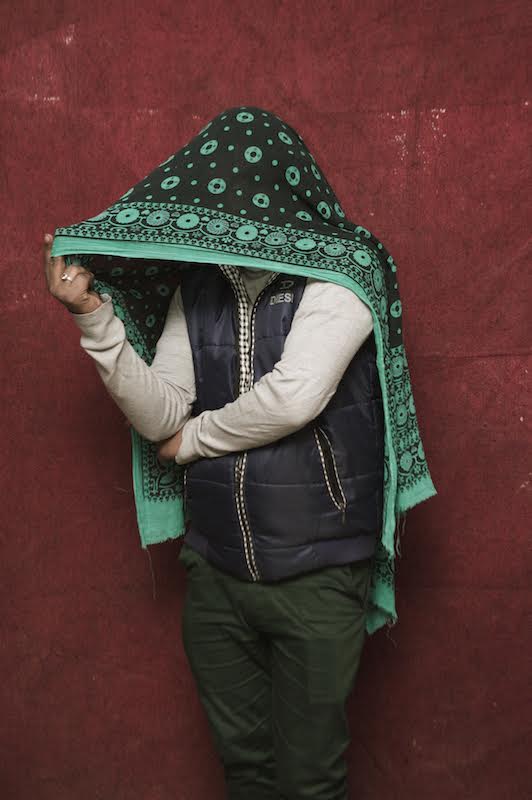We spoke to Charan Singh about photographing members of the Indian LGBT+ community
DTL: What is it like for members of the LGBT+ Community living in India today?
Charan: Homosexuality is still punishable by law in India, which means that corruption and homophobic abuse are rampant. Because of these attitudes, the LGBT+ community are subject to discrimination, harassment, rape, beatings and forced marriages. A consequence of this denial of freedom, is suicide.
Although there is a strong lobby for change, and there are very healthy conversations happening in India and other parts of South Asia regarding sexuality, we still have a very long battle ahead of us. It goes beyond a government overturning a ruling; we need to unlearn the phobia engrained in our society.

DTL: What inspired this series?
Charan: My photographic practice is informed by HIV/AIDS work and community activism in India, along with a formal study of the history of art and photography. I made this series because the LGBT+ sub-culture in India, is very rarely seen outside of its disempowered, HIV/AIDS victim narratives. So often, this community is reduced to data; they are pie-charts, tables and graphs. I wanted to move away from this one-dimensional conversation and explore their gendered and sexual life as a whole. I wanted to explore the human behind the statistic – the complexity of the person – and cover a range of emotions, anxieties, concerns, dilemmas and dreams, to give the subjects an importance, which contradicts the popular image of people from these social backgrounds.

DTL: Can you explain the title of the series?
Charan: The title of the project, ‘Kothis (effeminate, underprivileged, homosexual men), Hijras (eunuchs or transgender), Giriyas (partners of kothis and hijras) and Others (those born male whose sexuality cannot be categorised)’ are indigenous terms used by queer, working class and transgendered men in their own dialect, to define their different and particular sexual identities. Around 1994, UN funding for the AIDS epidemic bought all these identities into one umbrella term, “MSM” (Men who have Sex with Men.) This term was conceived to overcome the variety of local cultural differences from Morocco to Indonesia. Although it may have fulfilled its purpose to describe a category of behaviour, however, it failed to provide dignity to the affected communities it refers to, even after its recent inclusion of the term “TG” referring to transgender communities.

DTL: Do you know the people in the photographs?
Charan: I made the portraits of my sitters in their community centre and have known some of them for as long as sixteen years. For this reason, I feel they were comfortable posing for me in front of the lens. I am one of them. I am not appropriating their story. I am no threat. I want to represent them as they wish to be seen.
DTL: What inspired their poses? Did you tell them what to do?
Charan: As models they are greatly influenced by Bollywood cinema and television soaps, perhaps because they are primarily Hindi speaking people and their main source of visual reference is popular media. Art galleries, museums and the internet in India are not easily accessible to people who are not from the English speaking middle and upper-middle classes. Consequently, many of my sitters have adopted poses from heroines of popular television serials, whilst others have modelled themselves on famous courtesans’ characters in classic Bollywood films from the 1950s and 1960s.

DTL: What is your main objective as a photographer?
Charan: When I make photographs, I want to make something queer but also want to challenge stereotypes. Many of my subjects have never had a studio portrait made in their life-time. Therefore, I attempted to create a space where people could feel comfortable regardless of their class, caste, identity, gender, sexuality, performance; these are individual human beings each with their own nuances.













